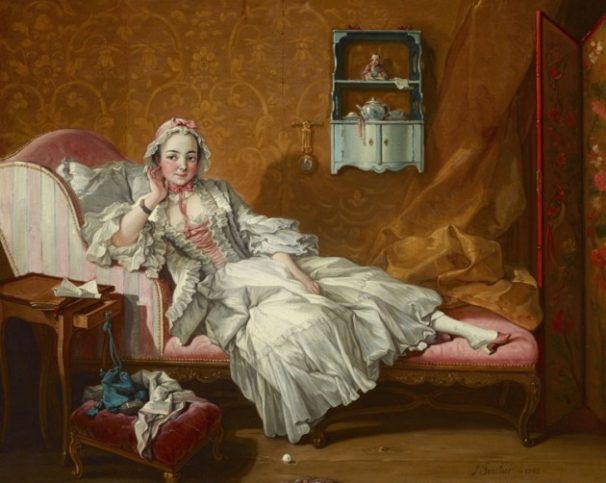
In the past we would look. And sometimes we would see. But now, in the art world, the operative word is “gaze.” That’s nothing new, the expression “gaze” has been in use since the feminist seventies, to describe the phenomenon of exhibitionism and objectification inherent in the presentation of the female figure in (predominantly) male art. But lately it’s become a meme and is reaching the strangest places.
The gaze could be a good thing or it could be very very bad depending on who is doing the gazing. For example, the male gaze is very bad. It’s terrible. You’ll learn why when you attend a series of free talks at the super-hip Marciano Art Foundation on Wilshire Boulevard. The talks, organized in support of a feminist exhibition, Donna Huanca: OBSIDIAN LADDER, promise to “highlight issues related to the feminine today and disrupting the male gaze.”
The Huanca show actually looks interesting. OBSIDIAN LADDER employs painting, sculpture, sound, scent, and performance to contrast strongly to the museum’s venue, a grand structure that is a former Scottish Rite Masonic Temple “built by and for men.” The “new topography” the work fosters is one of a “femme realm of reconciliation, creation and trust.”
The performative aspect of the exhibit includes a happening, every Saturday afternoon, in which painted “femme” models inhabit Huanca’s environment. According to the artist,
These individuals are essential to the empowering process of reclaiming this space. My work has always been a poetic gesture commenting on societal imbalances and injustices. As I have had more opportunities to exhibit publicly, in different contexts globally, my work has evolved to directly confront patriarchal realities, power dynamics, and hierarchies of contemporary life.

A Lady on Her Day Bed, 1743 Oil on canvas
22 1/2 x 26 7/8 in. (57.2 x 68.3 cm)
Purchased by The Frick Collection, 1937
Meanwhile, across town in Pasadena, the opposite is occurring. Men are disrupting the female gaze! That is happening in conjunction with the esteemed Norton Simon Museum’s current exhibition, The Sweetness of Life: Three 18th-Century French Paintings from The Frick Collection.
The show features three 18th-century French genre paintings — one each by François Boucher, Jean-Baptiste Siméon Chardin and Jean-Baptiste Greuze — masterpieces on loan from The Frick Collection in New York. The canvases, painted by these men, display middle-class French women of the 1740s and 1750s. They are installed in the museum’s 18th-century Rococo gallery among its own works by Chardin and Boucher, as well as paintings by Jean-Antoine Watteau and Jean-Honoré Fragonard. All on view for the male, female, child and grandparent gaze. It looks fabulous, and such a gorgeous sight, really, for the lazy days of summer.
Accompanying this exhibition is a film series, The Female Gaze: French Women Directors Shine a Light on Their World. This is where the gazing gets complicated for me. A worthy topic, packaged in a mini series, includes four woman-directed movies: two films by the recently departed French cineaste Agnes Varda, one each directed by Claire Denis and Mia Hansen-Løve.
My issue with this quartet of “female-centric” films by iconic French women directors” to use the Museum’s own language, is that one by one, they will be introduced not by a female film critic … of which we have a dearth … but by a male film critic … of which we have a plenitude! In this case the critic is Peter Rainer, who, god bless him, brings his expertise in analyzing “the female gaze.” Hmnnn…. I do not plan to be gazing on Mr. Rainer or his films.
The Female Gaze: French Women Directors Shine a Light on Their World, curated and introduced by Peter Rainer | Norton Simon Museum
Public Programs | Marciano Art Foundation | thru Fall 2019
